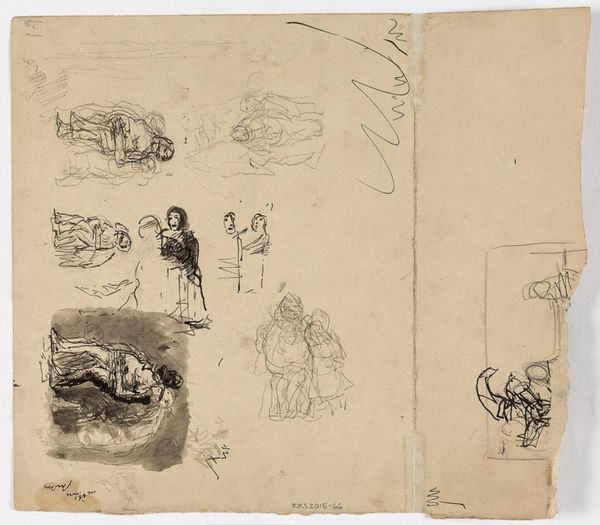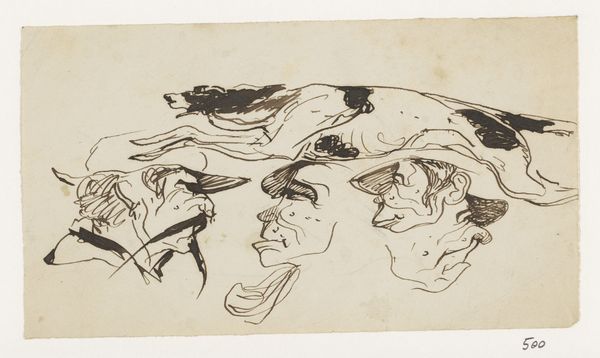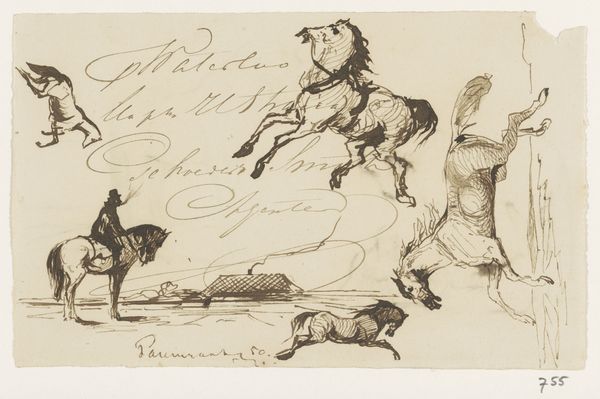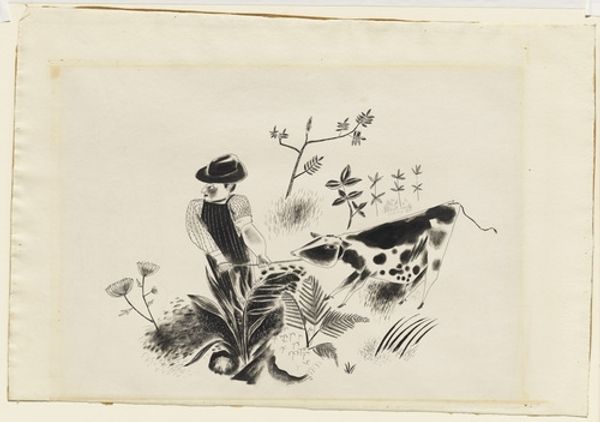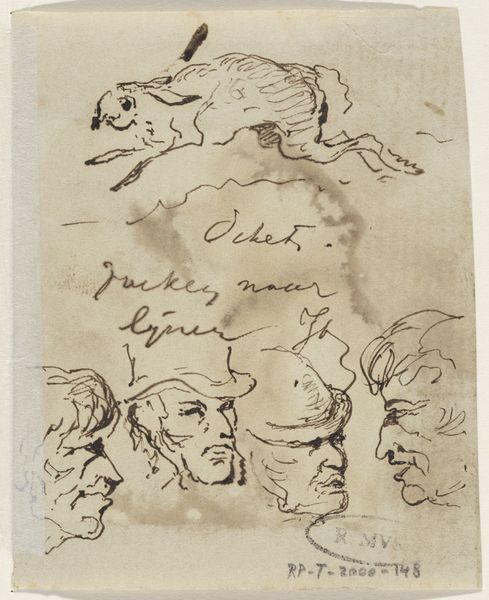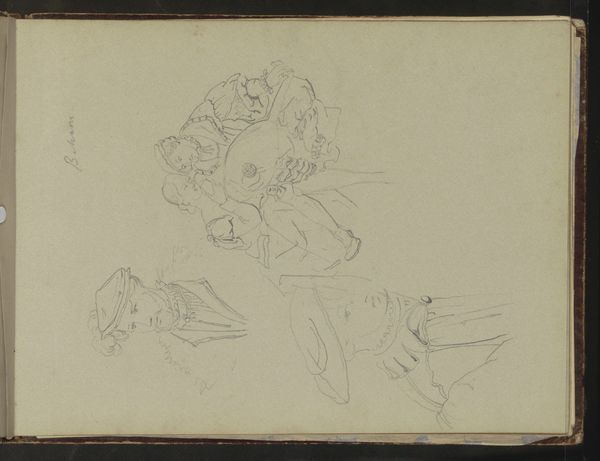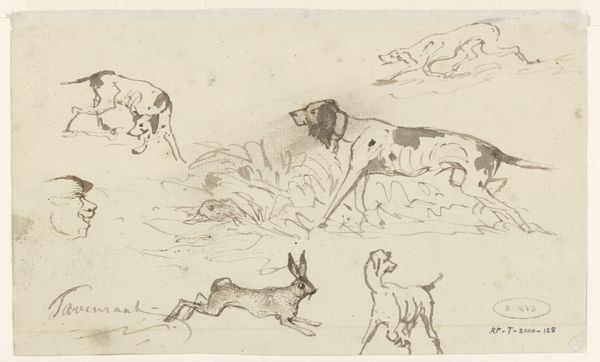
drawing, ink, pen
#
portrait
#
drawing
#
ink drawing
#
pen sketch
#
figuration
#
ink
#
pen
Dimensions: height 107 mm, width 152 mm
Copyright: Rijks Museum: Open Domain
Editor: We’re looking at "Hunting Dog and Heads" by Johannes Tavenraat, made sometime between 1840 and 1880. It's a pen and ink drawing at the Rijksmuseum. It looks almost like a sketch page, capturing quick impressions. What do you see in this piece? Curator: I see an interesting study in production itself. Note the swiftness of the pen strokes, the layering of ink – it speaks to a process of experimentation. Consider, too, the material constraints: paper, pen, ink readily available, cheap, and accessible, therefore perfect for quickly jotting down fleeting observations and practicing skill. Editor: So, less about the subject matter and more about… how it was made? Curator: Precisely. The artist isn’t presenting a polished "masterpiece" for a patron’s gaze. It’s raw, unedited. The arrangement of the figures, dog above portraits, is not traditional; we can think of this as a working-class artist finding his footing. The lack of refinement actually empowers the viewer to engage directly with the materiality of art creation itself, rather than be intimidated by virtuosity. It's democratic, even. Editor: Democratic art… because it uses accessible materials and displays the artistic process? That’s a different angle than I usually consider. Curator: Indeed. And consider the social implications: who had access to training? To patronage? A sheet of paper and some ink leveled the playing field somewhat, opening doors for artists like Tavenraat to explore their craft without the constraints of traditional art structures. Do you see it now? Editor: I think so. It’s not just *what* is depicted, but *how* it was made and *why* that gives it meaning. Thanks for making me look more carefully at art production. Curator: Exactly! Thinking about art through the lens of material conditions adds depth to our understanding and allows us to really grasp who was included or excluded from the sphere of artistic expression.
Comments
No comments
Be the first to comment and join the conversation on the ultimate creative platform.
